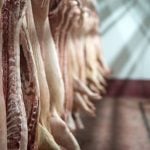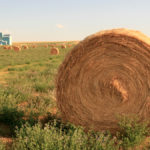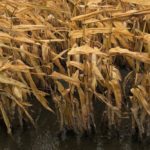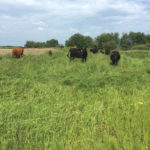
Tag Archives alfalfa

Six tips to make forage inventory management pay
Small actions can make a big difference when looking ahead to assess the year’s feed requirements
Back in November, Les Halliday was fielding calls from Maritime cattle producers already short on feed for winter. With difficult weather and loss of land for forage production in Atlantic Canada affecting winter feed supplies for many producers, Halliday, beef specialist with the P.E.I. Department of Agriculture, has seen how accurate forage inventory management can […] Read more

Creating a cold-tolerant alfalfa
Canadian scientists are pioneering new methods to speed development of more productive, cold-tolerant alfalfa varieties
Rows and rows of white metal cabinets resembling refrigerators line the basement of the Agriculture and Agri-Food Canada (AAFC) Research Centre in Quebec City. In fact, they are plant growth chambers that contain bright grow lights and potted alfalfa plants at different stages of maturity. In another area of the building there is a large […] Read more

Tips to assess and prevent alfalfa winterkill
Forage: News Roundup from the April 2020 issue of Canadian Cattlemen
When it comes to assessing and preventing winterkill in alfalfa stands, timing is everything. In a recent Beef Cattle Research Council webinar on winterkill in forage stands, Christine O’Reilly encouraged producers to scout alfalfa fields early and often to get on top of any issues resulting from winterkill. O’Reilly is a forage and grazing specialist […] Read more

New branch-rooted alfalfa cultivar hits the market
AAC Trueman is more resilient in extreme weather and can withstand extended periods of dryness, wetness or flooding
It’s been 30 years in the making, but a new branch-rooted alfalfa cultivar that is tolerant to both drought and excessive moisture is now available in Canada. It’s an important advancement given the increased occurrence of extreme weather events including heavy rains, flooding and drought. The licensing right for this new variety was awarded in […] Read more

Manitoba beef sector faces tight feed situation
MarketsFarm — An early snowstorm may have been the last straw for Manitoba livestock producers looking to put up feed ahead of winter. While the foot or more of heavy snow that blanketed much of the province over the Thanksgiving weekend has melted, saturated fields continue to limit corn silage harvests and hay cutting. “Feed […] Read more

Persistence pays when it comes to forage breeding
Research on the Record with Reynold Bergen
Forage legumes provide high yields, protein and good animal performance while improving soil fertility by fixing nitrogen from the air. Alfalfa is the highest yielding and most widely used legume but can cause bloat. Legumes like cicer milkvetch, sainfoin and birdsfoot trefoil do not cause bloat. As little as 25 per cent sainfoin in a […] Read more

Management key when evaluating forage production
What should you consider when evaluating the performance of grazing systems and forage production? According to Sean McGrath, management is the factor least often measured in the forage industry, but doing so can keep you accountable for your management decisions and positively impact performance. McGrath, who ranches with his family at Vermilion, Alta., discussed this […] Read more

Managing forage in a dry year
Planning for drought needs to occur before drought arrives
Drought is normal in Western Canada and it is not going to go away. We just don’t know when the next drought will be, or how long it will last. “Drought affects two basic parts of the rancher’s business,” says Dr. Art Bailey, range science professor emeritus at the University of Alberta. “On the demand […] Read more

Yield and quality pillars of forage production
Grow well-adapted varieties and match your forages to soil and climate conditions
When it comes to cost of production and efficiency, Bill Thomas considers yield and quality to be the two pillars of forage production. In order to keep these pillars standing strong, careful planning is the key to creating an effective forage production program. Thomas, retired director of Perennia’s field services division, delivered his recommendations at […] Read more

Tips for managing sainfoin in your forage stand
Keeping sainfoin populations high beyond five years is a challenge
Sometimes what’s old is new again. That certainly holds true for sainfoin as forage breeders release new varieties designed for today’s beef and forage operations. Sainfoin is a non-bloating legume native to Europe and western Asia. Agriculture and Agri-Food Canada (AAFC) released varieties such as Melrose and Nova in the 1970s and ’80s. But these […] Read more



